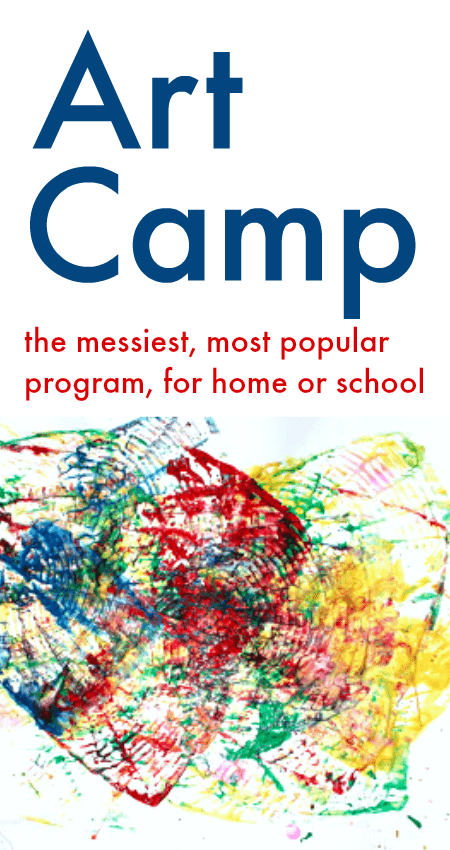My new book Super Sensory Invitations to Play is going on tour! Follow along with us as some totally awesome kids’ activities bloggers try out ideas from the book.
Garden sensory play :: petal perfume
Do you remember making petal perfume when you were a child? It’s a lovely garden sensory play idea I’m keen to pass on to my daughter.
Here’s how we made ours:
Garden sensory play :: homemade petal perfume [Read more…]
The messiest, most popular Art Camp
The messiest, most popular program of outdoor and process art to use at home or at school. Welcome to Art Camp!
The messiest, most popular Art Camp
Small world play :: frog life cycle
This small world play idea combines sensory play and loose parts to explore the frog life cycle. Come and take a look at our indoor pond!
Small world play :: frog life cycle
Watch our Sensory Tub Masterclass
Click to play on the video above to see our sensory tub masterclass. You’ll learn how to make a sensory tub for your children using simple materials, the benefits of sensory tubs for children, and how to use a sensory tub to teach children about math, literacy, science and fine motor skills.
You’ll also see lots of ideas for sensory tub fillings plus find out how to get great printables to add to your tubs. Subscribe to NurtureStore’s YouTube channel to get more sensory play videos!
We’ve been rather disappointed to have found no frogspawn in grandma’s pond this year, as we really wanted a jar of it to study at home. But, we are not ones to sulk for long! We decided to take matters into our own hands and do the next best thing: create a small world pond in the play room.

I set out a towel to catch any spills and gave the children a shallow tub of water and some grass from our garden sensory tub.

And then we added in some loose parts that we thought might make good ingredients for the pond: bark, leaves, logs, pebbles. The frogs, spawn and tadpoles are part of a set from Insect Lore. We’ve included some clear water beads, which are a great sensory material and make convincing frog spawn, but I would take care with them and certainly not use them if there is any possibility of your children putting them in their mouths. We had 6 – 10-years-old playing here, but for younger children you can simply omit the water beads and still enjoy a lovely pond small world.

It’s tempting to set out the small world play scene yourself, but if you can resist let the children make it by themselves. Whether they create a realistic pond, bringing to life the science and nature study they’ve been doing, or create an imaginary land, perhaps exploring story-lines about happy frog families or frogs and princesses, it’s always interesting to sit back and observe, and get an insight into what is going on in their thoughts.

We discovered nasturtium leaves make perfect lily pads…

and that bark floats – giving our frogs a great place to hang out and tadpole-watch!

Try a small world yourself this week
If you’ve never set up a small world for children could I encourage you to give it a try this week? I’ve never met a child who doesn’t like them! And especially try one if your children are a little older (it’s my 10-year-old you can see playing here) because I think that opportunities to enjoy this kind of small world imaginary play disappears from classrooms as children get above six, seven, eight… years of age, but really they are still such a valuable and enjoyable way for children to play and learn.
Chinese New Year sensory play activities
Here’s a great collection of Chinese New Year sensory play activities.

Chinese New Year sensory play activities
[Read more…]Ice play ideas for children
For day two of our at-home, screen free play ideas series, we’re looking at ice play.
It’s a great contrast to yesterday’s water play ideas and offers the opportunity for lots of exploring and discovering.
Ice play ideas for children
[Read more…]
- « Previous Page
- 1
- …
- 28
- 29
- 30
- 31
- 32
- …
- 40
- Next Page »






